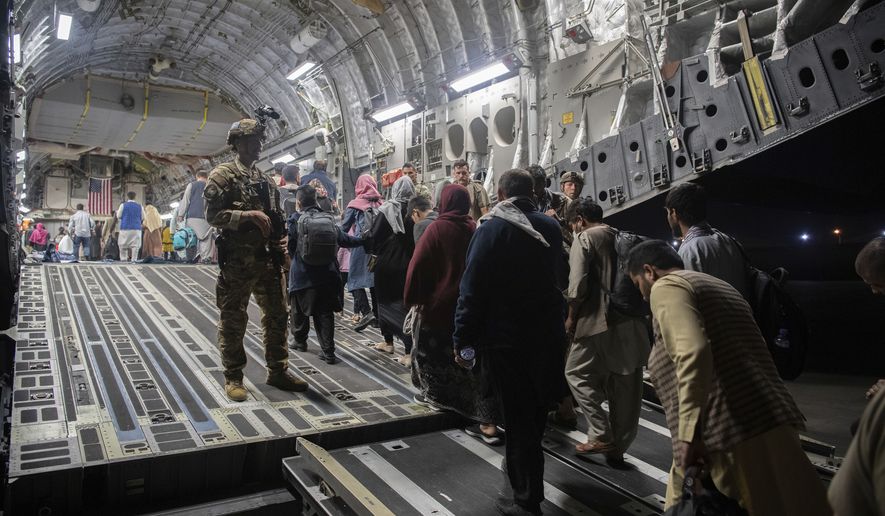The U.S. State Department’s Inspector General has launched four separate investigations into the Biden administration’s performance during the drawdown in Afghanistan.
Acting Inspector General Diana Shaw notified Secretary of State Antony Blinken of the reviews in an Oct. 15 memo, which Politico reported this week. Ms. Shaw also notified several congressional committees on Monday in a letter obtained by The Washington Times.
The investigations will focus specifically on the Afghanistan Special Immigrant Visa Program, Afghan refugee processing and admission to the U.S., Afghan refugee resettlement, and emergency action planning for the U.S. Embassy in Kabul.
“Given the elevated interest in this work by Congress and the unique circumstances requiring coordination across the Inspector General community, I wanted to notify our committees of jurisdiction of this important work,” Ms. Shaw wrote in the letter to lawmakers.
The announcement comes just over a month after Mr. Blinken, in testimony before the House Foreign Affairs and Senate Foreign Relations committees, defended the administration’s handling of the withdrawal in which more than 100 U.S. citizens were left behind as the U.S. military rapidly exited the country.
Lawmakers have pressured the State Department to explain key decisions leading up to and throughout the withdrawal.
Chief among lawmakers’ complaints is the Biden administration’s handling of the Special Immigrant Visa (SIV) program, which had been hobbled by long processing times and bureaucratic delays throughout several administrations.
Throughout last summer, lawmakers called on the administration to develop plans to evacuate the backlog of 18,000 SIV applicants, many of whom were interpreters who worked directly for the U.S. military throughout the war and who feared Taliban retribution following the withdrawal.
In July, President Biden announced Operation Allies Refuge, a State Department-led initiative to relocate SIV applicants who were in the final stages of processing for their visas to the U.S. military installations on U.S. soil and in third countries. Many lawmakers praised the efforts but feared that it would be too late for many applicants.
By the time the U.S. withdrew its final troops at the end of August, thousands of SIV applicants remained stranded in Afghanistan. Mr. Biden pledged the U.S.’s commitment to continue to evacuate vulnerable Afghans, but months after the withdrawal, evacuation efforts remain stymied by tense relations with the Taliban.
Other concerning details of the State Department’s planning began to surface in the final weeks of the pullout.
In mid-August, the Wall Street Journal reported that 23 staffers stationed at the U.S. Embassy in Kabul sent a cable in July via the State Department’s dissent channel warning of the Taliban’s rapid advance and potential collapse of the Afghan security forces and calling for evacuation efforts to be increased.
The report not only called into question the administration’s claims that a swift Taliban takeover of the country was unforeseeable but also raised questions over the State Department’s contingency planning.
Sen. Bill Hagerty, Tennessee Republican who served as U.S. ambassador to Japan, told The Times that every ambassador is responsible for having a Noncombatant Evacuation Operations (NEO) plan in place for evacuating U.S. citizens in the event of an emergency. He said it was clear that the plan for Afghanistan was not sufficient.
“It’s my view based on the failure of the execution of the NEO that they obviously didn’t have a good grasp on the situation on the ground,” Mr. Hagerty said at the time. “To the extent people try to use the dissent channel to reflect their concerns, it was ignored. It was ignored at the highest levels of the State Department and went all the way up to the secretary.”
• Joseph Clark can be reached at jclark@washingtontimes.com.




Please read our comment policy before commenting.